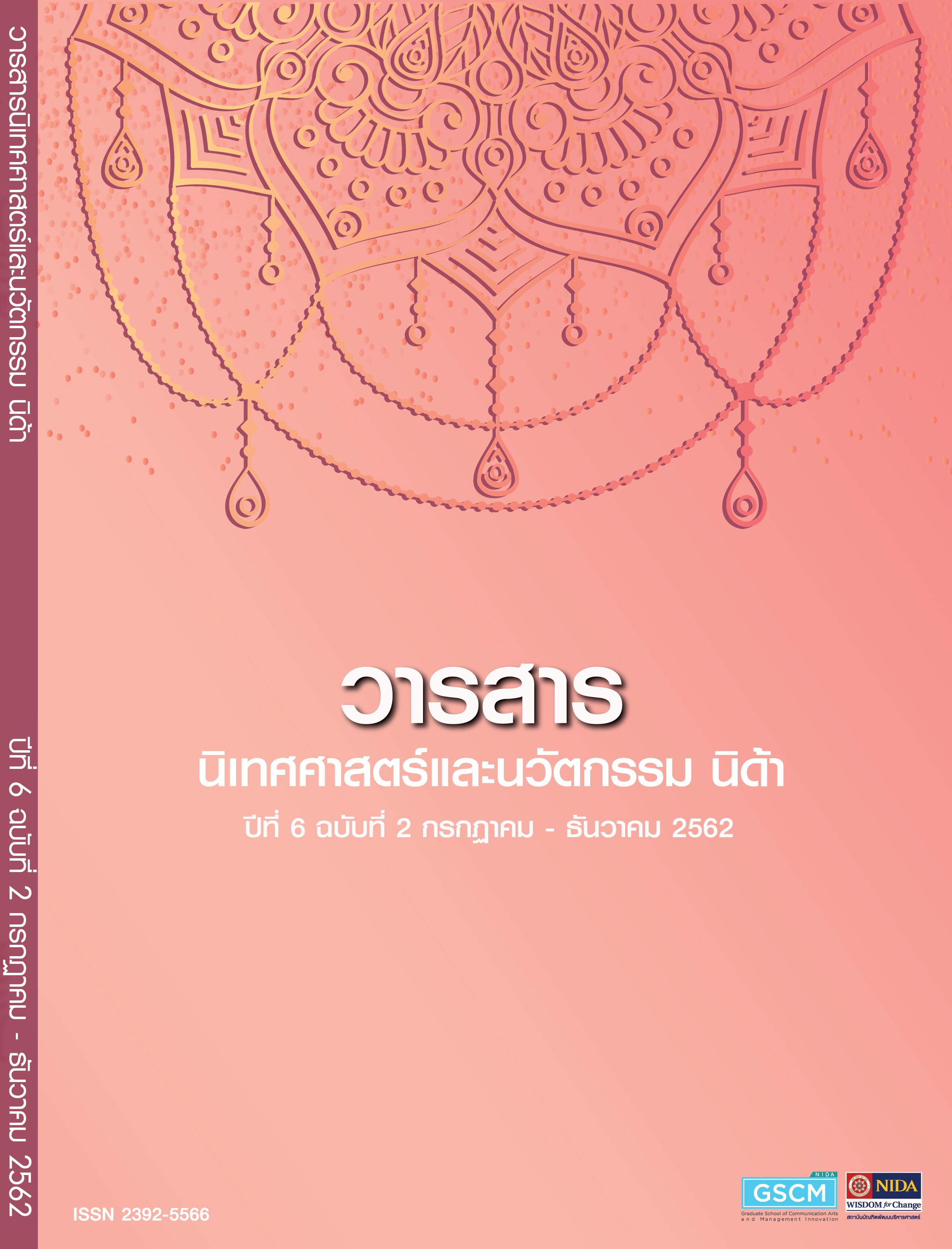Communication Techniques of Professional Trainer
Main Article Content
Abstract
Training in the organization is one of the best practice in human resource development; therefore, the trainer and communication skills of the trainer, is the important factor that has an effect on the effectiveness of the training. As a matter of fact, the synthesis of this research aims to describe the communication techniques of the trainer. The results indicate that in the training courses, the communication techniques of professional trainers can be categorized into three types; (1) Direct communication in which it refers to a situation that trainers and participants communicate without any supportive communication materials/tools or any additional activities in the training process. (2) Indirect communication with supportive communication materials/tools, this refers to a situation that trainers and participants bring in some supportive communication materials to further assist their communication in the training process. (3) Indirect communication with additional activities, this refers to a situation that trainers and participants generate some additional activities in order to support their communication in the training process. Indeed, the direct communication type shows an outstanding result since it is a communication technique that trainers prefer to mostly apply it in the training process.
Article Details
ข้อความและความเห็นในวารสารนิเทศศาสตร์และนวัตกรรม นิด้า เป็นของผู้เขียนแต่ละท่าน มิใช่ของคณะนิเทศศาสตร์และนวัตกรรมการจัดการ สถาบันบัณฑิตพัฒนบริหารศาสตร์
References
ฉลอง มาปรีดา. (2538). เทคนิคการฝึกอบรมและการประชุม. กรุงเทพฯ: สำนักพิมพ์โอเดียนสโตร์.
ชาญ สวัสดิ์สาลี. (2555). เทคนิคการจัดฝึกอบรมและการประชุมคู่มือการประเมินและติดตามผลการฝึกอบรม สำหรับผู้รับผิดชอบโครงการฝึกอบรม/สัมมนา. นนทบุรี: สวัสดิการสำนักงาน ก.พ.
ดวงจันทร์ อ่าววิจิตร. (2533). วิธีการฝึกอบรมที่เหมาะสมสำรับรัฐวิสาหกิจตามการรับรู้ของวิทยากรฝึกอบรม. จุฬาลงกรณ์มหาวิทยาลัย.
ทองศรี กำภู ณ อยุธยา. (2532). การบริหารงานบุคคลในแนวทางใหม่. กรุงเทพฯ: โรงพิมพ์มหาวิทยาลัยธรรมศาสตร์.
พจน์ เพชระบูรณิน. (2521). การสื่อความกับการฝึกอบรม. (สำนักฝึกอบรม, Ed.). กรุงเทพฯ: สถาบันบัณฑิตพัฒนบริหารศาสตร์.
เพ็ชรี รูปะวิเชตร์. (2554). เทคนิคการจัดฝึกอบรมและการประชุม. กรุงเทพฯ: บริษัท ออฟเซ็ทครีเอชั่น จำกัด.
วิจิตร อาวะกุล. (2540). การฝึกอบรม. กรุงเทพฯ: ศูนย์หนังสือจุฬาลงกรณ์มหาวิทยาลัย.
สมคิด บางโม. (2551). เทคนิคการฝึกอบรมและการประชุม (4th ed.). กรุงเทพฯ: บริษัทวิทยาพัฒน์.
MGR Online. (2553). ธุรกิจฝึกอบรมและเสริมทักษะทะลุพันล.“แพน โฟ”ผุดงาน Learning Expo 2010. Retrieved from http://www.manager.co.th/Business/ViewNews.aspx?NewsID=9530000115688
Ready Planet. (2560). Grand Opening Shappy Training App. Retrieved from https://blog.readyplanet.com/15681577/news-grand-opening-shappy-training-app-in-march-17-2016
Berlo, D. (1960). The Process of Communication : An Introduction to Theory and Practice. New York: Holt, Rinehart and Winston.
Elihu Katz and Paul F. Lazarsfeld (1955). Personal Influence. New York: Random Press.
Gagne, R. M., Wager, W. W., Goal, K. C., & Keller, J. M. (2005). Principles of instructional design (5th ed.). Belmont: CA:Thomson Learning Academic Resource Center.
Nadler, L. (1980). Corporate Human Resource Development. New York: Van Nostrand Reinhold.
Noe, R. A. (2013). Employee Training and Development (6th ed.). New York: McGraw-Hill.
Seal, J., & McKenna, M. (1990, November 8). British Quality Awards. The Daily Telegraph.


